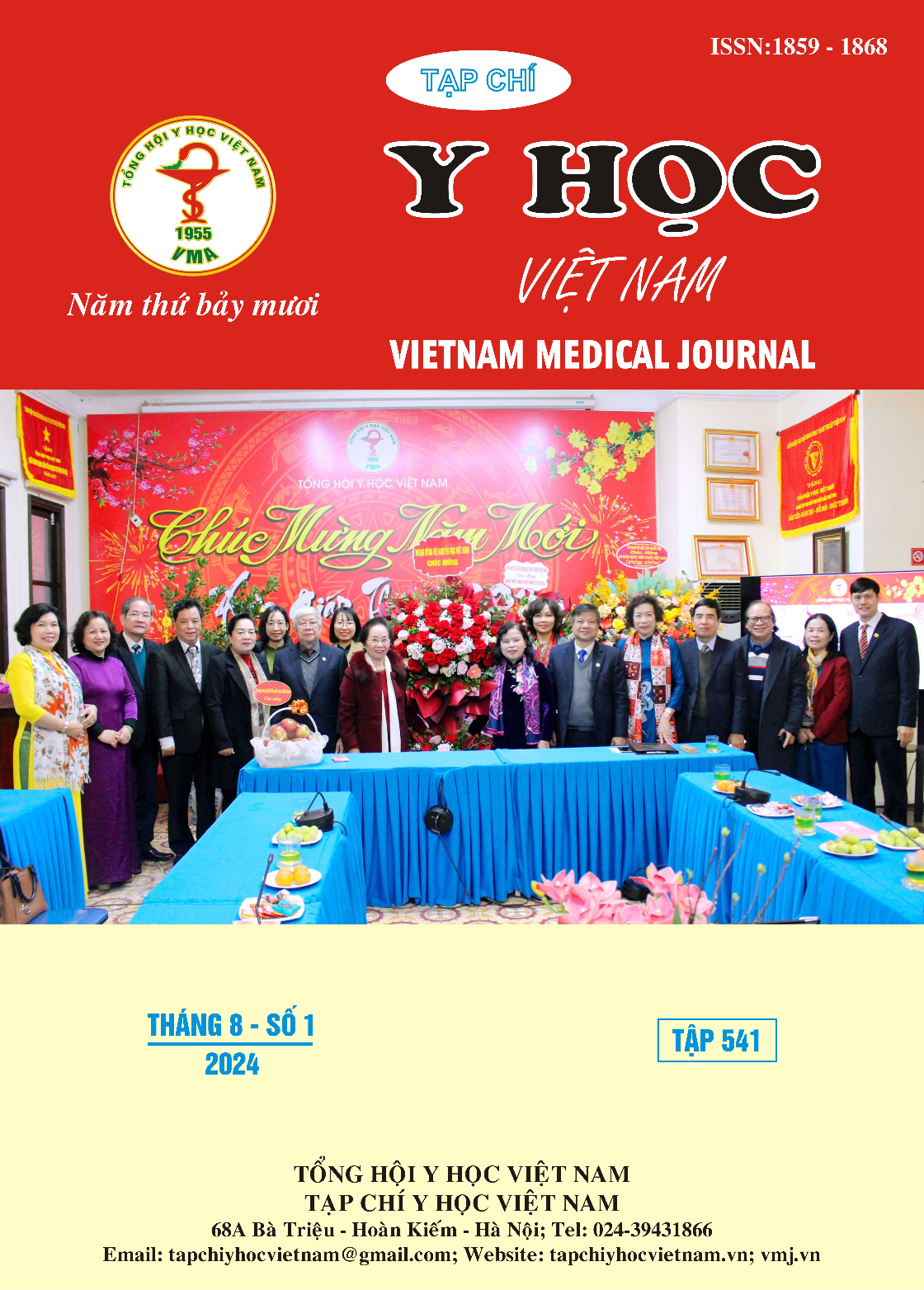PREVALANCE AND DISTRIBUTION OF NEGATIVE BACTERIA ISOLATED AT TAM ANH GENERAL HOSPITAL IN 2023
Main Article Content
Abstract
Gram-negative bacteria play a significant role in infectious diseases, highlighting the importance of understanding their distribution for effective disease surveillance. Methods: This cross-sectional descriptive study aimed to assess the infection rate and prevalence of common gram-negative bacteria at Tam Anh General Hospital in 2023. Results: Among 7196 culture samples analyzed, 1934 tested positive, representing a positivity rate of 26.9%. Respiratory samples exhibited the highest positivity rate at 32.6%, followed by urine (23.2%), blood (5.5%), body fluid (18.0%), and stool (1.5%). A total of 2014 bacterial strains were isolated from positive samples, with Haemophilus influenzae being the predominant strain (44.4%), followed by Moraxella catarrhalis (31.0%) and Escherichia coli (15.9%), with other bacteria collectively accounting for <3.5%. H. influenzae (55.8%) and M. catarrhalis (30.0%) were primary pathogens in respiratory tract infections, while E. coli was the most common strain in the urinary tract (82.5%), blood (77.5%), and body fluid (57.8%). In clinical departments, E. coli predominated in ICU (Intensive care unit) (61.2%), Internal Medicine (56.1%), and Surgery (75.9%), whereas H. influenzae (56.2%) and M. catarrhalis (40.0%) were prevalent in Pediatric department. Conclusions: The study underscores H. influenzae, M. catarrhalis, and E. coli as leading Gram-negative bacterial pathogens. E. coli notably contributes to sepsis, urinary tract, and body fluid infections, and is pervasive in Internal Medicine, Surgery, and ICU departments, while H. influenzae and M. catarrhalis predominantly affect respiratory ailments and are prevalent in Pediatric departments, emphasizing the importance of vigilant infectious disease monitoring within hospital settings.
Article Details
Keywords
Gram-negative bacteria, Tam Anh general hospital, Haemophilus influenzae, Moraxella catarrhalis, Escherichia coli
References
2. Tacconelli, E., et al., Discovery, research, and development of new antibiotics: the WHO priority list of antibiotic-resistant bacteria and tuberculosis. Lancet Infect Dis, 2018. 18(3): p. 318-327.
3. Nguyễn Thị Hải và cộng sự, Tỷ lệ phân bố các chủng vi khuẩn thường gặp tại bệnh viện đa khoa tỉnh Bắc Ninh năm 2022. Nghiên cứu y học, 2023. 172(11): p. 133-140.
4. Gandra, S., et al., Trends in antibiotic resistance among major bacterial pathogens isolated from blood cultures tested at a large private laboratory network in India, 2008–2014. International Journal of Infectious Diseases, 2016. 50: p. 75-82.
5. Sader, H.S., et al., Geographical and temporal variation in the frequency and antimicrobial susceptibility of bacteria isolated from patients hospitalized with bacterial pneumonia: results from 20 years of the SENTRY Antimicrobial Surveillance Program (1997-2016). J Antimicrob Chemother, 2019. 74(6): p. 1595-1606.
6. Quyết định 1539/QĐ-BYT - Hướng dẫn thực hành kỹ thuật xét nghiệm vi sinh lâm sàng. 2017.
7. Hồng Thị Khánh Ngân và Phạm Thị Bích Phượng, Tình trạng kháng kháng sinh của vi khuẩn gram âm thường gặp tại bệnh viện Bình Dân. Y học Việt Nam, 2022. 520(2): p. 354-358.
8. Shi, T. and L. Xie, Distribution and antimicrobial resistance analysis of gram-negative bacilli isolated from a tertiary hospital in Central China: a 10-year retrospective study from 2012 to 2021. Front Microbiol, 2023. 14: p. 1297528.


